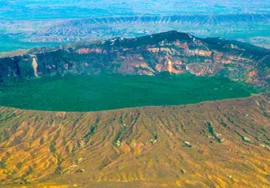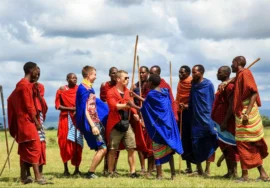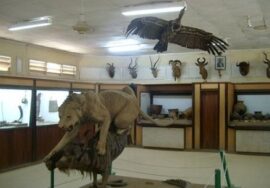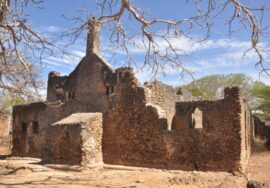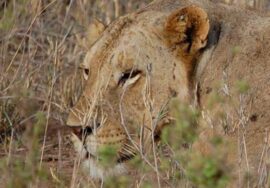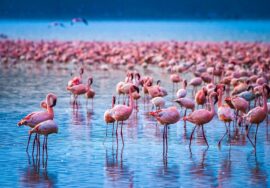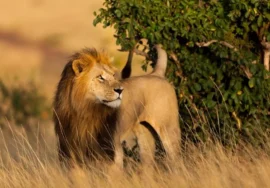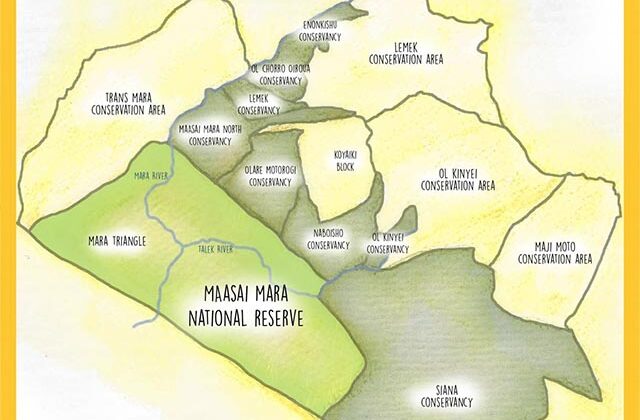
Masai Mara National Reserve and Conservancies
The Masai Mara Reserve is on the southwest border of Kenya with Tanzania. It connects to the Serengeti wildlife area to make what may be the most dramatic wilderness area on the continent.
When Kenya and Tanzania meet, there are no walls between them. There are also no fences between the reserves and the private conservancies that are all around them. Wildlife should be able to freely move from south to north and back again, just like they have for hundreds of years.
Masai Mara National Park
The Masai Mara Game Reserve began as a small wildlife refuge covering 520 km² in 1948. It was expanded to the east in 1961 and went through a few different sizes before it reached its current size of 1,510 km². The Maasai people named the area “Mara,” which means “spotted” in their language. this is how the reserve got its name. The area looks just like this from far away. Wide, flat fields with umbrella acacia trees, bushes, and animals here and there.
For the black rhino, the Ngama Hills in the east are a good place to live. They are sandy and covered in thick bush. On the west, the Oloololo Escarpment marks the line. Elephant, lion, cheetah, and leopard can often be seen in the Musiara Swamp, which is on the northern border. The Mara Triangle is surrounded by the lush grasslands along the Mara River, which is where a lot of wildebeest gather during their yearly migration.
The Trans-Mara County Council, a non-profit group, is in charge of the National Reserve’s Mara Triangle. The Narok County Council is in charge of the more popular with tourists southeast corner. The anti-poaching teams and the tourism in the area are all run by these groups, which also look after the wildlife.
The Mara River
The Mara River starts in the Napuiyapi Swamp in the Kenyan mountains as the Amala and Nyangores rivers. Along its path, it provides water for both people and animals. The two rivers meet to make the Mara River. The Mara River flows through some of Africa’s most beautiful wilderness areas, like the Masai Mara and the Serengeti, on its way to Lake Victoria. But it is in the Masai Mara that some of the most amazing natural events happen.
The Masai Mara National Reserve gets most of its water from the Mara River. The thousands of animals that live in the reserve need water all year, but from late July to October, the river is home to the Great Migration and the famously dramatic river crossings. Big cats wait all year for the horses to cross the Mara, and when they do, they eat them.
There is no way to know for sure where the Wildebeest will cross the Mara River, but they tend to pick places with slower currents. These areas may be longer and more dangerous, though, because of the Crocodiles. There are times when the herds will stand on the edge of the river for hours and then leave without crossing.
Masai Mara Parks and Reserves
About a quarter of Kenya’s wildlife lives in the Masai Mara environment. A lot of this wildlife lives in rangelands outside the reserve. There are a lot of different people who own land in these rangelands. Some are private individuals, some are communities, and some are groups of people who live on land that used to be community land but has since been split up.
A lot of these landowners are typical Maasai herders. These fields make up most of the old migration routes that run along the Masai Mara, a popular tourist destination. Wildlife in the country would be in big trouble if the landowners ever decided to fence them off and use their land for farming.
The different Mara conservancies have grown and changed on their own, but they all follow the same plan for conservation: they rent land from Maasai landowners, use tourism money to help communities and ecosystems, and make the area a popular tourist spot.
This means that everyone benefits: the environment and wildlife are protected; the local people directly benefit from tourism; and tourists have a beautiful place to see Africa’s wildlife, just like they have done since ancient times. At this point, five conservancies have agreed to support this project.
Conservancy of Enonkishu
It is at the very northern end of the Greater Mara Ecosystem and runs along the Mara River. Many giraffes, wild animals, and buffalo that live in the area live close to the border. There is a pride of lions that lives in the reserve and looks after their own land. There are also a lot of hippos and crocodiles along the river, and leopards live in the woods that are next to the river. There are also times when rare animals like the aardvark, caracal, and aardwolf can be found here. Along with helping with the local community, they also focus on programs for managing cattle.
Protected Area of Mara Naboisho
There is a private reserve right next to the Masai Mara Reserve where you can see a lot of wildlife. A huge number of elephants, giraffes, zebra, and big cats can be found. By giving a lot of the conservancy fees people pay back to the Maasai community, this area is kept private and the community is protected and given more power.
Conservancy of Mara North
This company does not make money. It is a combination between twelve member camps and 788 Maasai landowners. They care about the environment, wildlife, and local people more than anyone else in the world. Along the Masai Mara Reserve, it is one of the most wildlife-rich places in the Masai Mara. In Leopard Gorge, big cats give birth and care for their young. The BBC show “Big Cat Diary” made this area popular. Also a good spot to see wild dogs, which are becoming very rare. A lot of wildebeest come to Mara North during the Loita Hills migration, which lasts from December to May.
Conservancy of Ol Kinyei
The first wildlife sanctuary in the Mara ecosystem. It was made up of 8,000 acres of community land that was set aside for wildlife with no people or animals living there. As of now, the reserve covers 17,500 acres and is owned by the Maasai people. They donated their land to protect wildlife so that they could improve their lives and not depend so much on cattle. A group of more than 30 lions, leopards, and other animals lives there, along with more than 300 different kinds of birds. With only two camps and 15 tents, this reserve lets you see wildlife without a lot of other people.
Conservancy of Olare Motorogi
In May 2006, a deal was made with 277 Maasai landowners to create this reserve, which is next to the Masai Mara Reserve.They offer high-quality trips with little crowds. In exchange for moving their homes out of the area, the Maasai people will only let managed cattle graze, letting the wildlife alone. This has led to a greater variety and number of animals in the area. There are now good numbers of both hunters and herbivores, like elephants and big cats.


